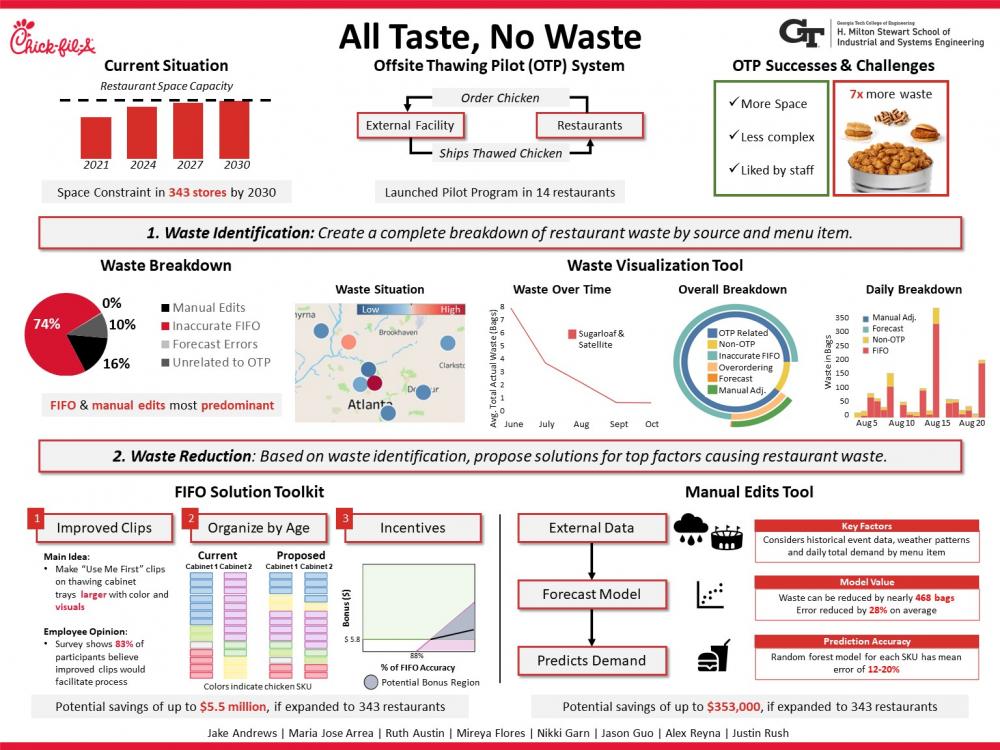Client Context
By 2030, Chick-fil-A projects 343 restaurants will reach their storage capacity and will be unable to capitalize on growth. To prevent this, Chick-fil-A has developed the Off-site Thawing Pilot (OTP), which thaws chicken off-site and delivers thawed chicken to restaurants. While the OTP is successfully increasing storage space, the OTP is also producing seven times more waste than non-OTP restaurants.
Project Objective
Although Chick-fil-A wants to scale the OTP system to all 343 stores, it will not be able to do so without reducing waste at the restaurant level. For this reason, our team worked with Chick-fil-A to identify the major sources of waste in the OTP system and propose tangible solutions to reduce such waste.
Design Strategy
Given that Chick-fil-A does not have a comprehensive breakdown of OTP restaurant’s waste, our team created an algorithm that calculates the breakdown of waste from the start of the pilot program. The results showed that FIFO inventory inaccuracies and manual order adjustments are the major sources of waste. To visualize the waste breakdown, we created a Tableau dashboard that features:
- a heat map showing the restaurant’s waste percentages
- a line graph of restaurant’s waste over time
- a nested pie chart showing the waste breakdown
- a stacked bar chart showing the daily waste breakdown.
Having visualized the waste breakdown, our team focused on providing strategies for waste reduction. To reduce the waste due to inaccurate FIFO inventory usage, our team created a toolkit of potential solutions. The toolkit includes strategies such as improving the current “Use Me First” clips, reorganizing the SKU distribution in cabinets, and creating incentives based on the Principal-Agent model.
Additionally, to reduce the amount of waste due to manual order adjustments, our team created a random forest model and multiple regression model to determine the impact of special factors on a restaurant’s demand for each SKU. These factors include major sporting events near each restaurant and weather conditions such as temperature and precipitation. Based on the models’ results, we created a prediction tool that outputs predicted demand by SKU for a range of dates with certain characteristics.
Deliverables
We provided Chick-fil-A with 3 deliverables:
- An algorithm that breaks down waste along with a dashboard that enables Chick-fil-A to visualize the waste results achieved by the algorithm
- A FIFO Solution toolkit that presents different solutions that could be successful in reducing restaurant waste due to FIFO
- A manual adjustment tool that suggests how much operators should order in a day with traditional demand. This deliverable aims to help operators reduce waste from manual adjustments.


